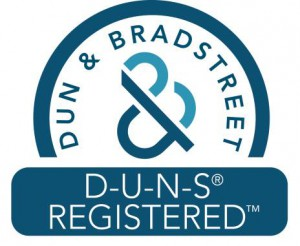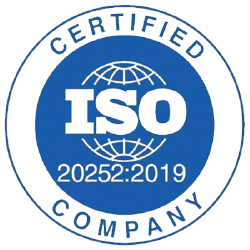Page mise à jour :
Jul 2025
INTRODUCTION DU MARCHÉ Les applications croissantes des mélangeurs à ruban dans le secteur de l'alimentation et des boissons devraient créer un impact positif sur la croissance du marché dans les années à venir. Les mélangeurs industriels à ruban alimentaire offrant une faible consommation d'énergie et une grande homogénéité, ils sont largement utilisés dans l'industrie agroalimentaire pour de nombreuses applications telles que la fabrication de mélanges à muffins, de gâteaux, de produits laitiers, de céréales, de snack-bars, de farine de café, de thé, d'améliorants de pain. et les boissons énergisantes. DYNAMIQUE DU MARCHÉ Le marché des mélangeurs à ruban devrait se développer au cours de la période de prévision, car les fabricants proposent des équipements avec des structures personnalisables, notamment un contrôle de la température, un système de pulvérisation pour les ajouts de liquides, des dispositions pour le vide et la pression interne et un système automatisé. contrôle des recettes. Charles Ross & Son a récemment annoncé le mélangeur à ruban sanitaire Ross modèle 42N-36S avec un mélangeur de 36 pieds cubes. capacité de travail extrême. L'équipement est également livré avec un agitateur à double ruban qui contribue à améliorer le mouvement latéral et radial des matières premières et comporte des pièces en contact avec le produit polies en acier inoxydable 316 pour un nettoyage amélioré. ÉTENDUE DU MARCHÉ L'« Analyse du marché mondial des mélangeurs à ruban jusqu'en 2031 » est une étude spécialisée et approfondie de l'industrie des produits chimiques et des matériaux avec un accent particulier sur l'analyse des tendances du marché mondial. Le rapport vise à fournir un aperçu du mélangeur à ruban avec une segmentation détaillée du marché par type et application. Le marché mondial des mélangeurs à ruban devrait connaître une forte croissance au cours de la période de prévision. Le rapport fournit des statistiques clés sur l’état du marché des principaux acteurs du marché des mélangeurs à ruban et présente les principales tendances et opportunités sur le marché. SEGMENTATION DU MARCHÉ Le marché mondial des mélangeurs à ruban est segmenté en fonction du type en mélangeurs à ruban verticaux et mélangeurs à ruban horizontaux. Sur la base de l’application, le marché des mélangeurs à ruban est segmenté en industrie alimentaire et des boissons, industrie chimique et pétrochimique, industrie pharmaceutique, etc. CADRE RÉGIONAL Le rapport fournit un aperçu détaillé du secteur, comprenant des informations à la fois qualitatives et quantitatives. Il fournit un aperçu et des prévisions du marché mondial des mélangeurs à ruban en fonction de divers segments. Il fournit également la taille du marché et des estimations prévisionnelles pour la période 2021 à 2031 pour cinq grandes régions, à savoir : Amérique du Nord, Europe, Asie-Pacifique (APAC), Moyen-Orient et Afrique (MEA) et Amérique du Sud. Le marché des mélangeurs à ruban de chaque région est ensuite sous-segmenté par pays et segments respectifs. Le rapport couvre l'analyse et les prévisions de 18 pays dans le monde ainsi que la tendance actuelle et les opportunités qui prévalent dans la région. Le rapport analyse les facteurs affectant le marché des mélangeurs à ruban du côté de la demande et de l’offre et évalue en outre la dynamique du marché affectant le marché au cours de la période de prévision, c’est-à-dire les moteurs, les contraintes, les opportunités et les tendances futures. Le rapport fournit également une analyse PEST exhaustive pour les cinq régions, à savoir : Amérique du Nord, Europe, APAC, MEA et Amérique du Sud après avoir évalué les facteurs politiques, économiques, sociaux et technologiques affectant le marché des mélangeurs à ruban dans ces régions. ACTEURS DU MARCHÉ Les rapports couvrent les développements clés du marché des mélangeurs à ruban en tant que stratégies de croissance organique et inorganique. Diverses entreprises se concentrent sur des stratégies de croissance organique telles que les lancements de produits, les approbations de produits et d'autres telles que les brevets et les événements. Les activités de stratégies de croissance inorganiques observées sur le marché étaient des acquisitions, des partenariats et des collaborations. Ces activités ont ouvert la voie à l’expansion des activités et de la clientèle des acteurs du marché. Les acteurs du marché des mélangeurs à ruban devraient bénéficier d’opportunités de croissance lucratives à l’avenir avec la demande croissante de mélangeurs à ruban sur le marché mondial. Vous trouverez ci-dessous la liste des quelques entreprises engagées sur le marché des mélangeurs à ruban. Le rapport comprend également les profils d’entreprises clés ainsi que leur analyse SWOT et leurs stratégies de marché sur le marché des mélangeurs à ruban. En outre, le rapport se concentre sur les principaux acteurs de l'industrie avec des informations telles que les profils d'entreprise, les composants et les services proposés, les informations financières des 3 dernières années, l'évolution clé des cinq dernières années.
- • Salzgitter • Couronnes • Bulkmatic • Marel • Tetra Laval International • Technologies FMC • Machines Munson • Buhler Holding • Groupe GEA • Charles Ross and Son
- Analyse historique (2 ans), année de base, prévision (7 ans) avec TCAC
- Analyse PEST et SWOT
- Taille du marché Valeur / Volume - Mondial, Régional, Pays
- Industrie et paysage concurrentiel
- Ensemble de données Excel
Rapports récents
Témoignages
Raison d'acheter
- Prise de décision éclairée
- Compréhension de la dynamique du marché
- Analyse concurrentielle
- Connaissances clients
- Prévisions de marché
- Atténuation des risques
- Planification stratégique
- Justification des investissements
- Identification des marchés émergents
- Amélioration des stratégies marketing
- Amélioration de l'efficacité opérationnelle
- Alignement sur les tendances réglementaires
Nos clients






























Assistance commerciale
US: +1-646-491-9876
UK: +44-20-8125-4005
Email: sales@theinsightpartners.com
Discutez avec nous

87-673-9708

ISO 9001:2015



 Obtenez un échantillon gratuit pour - Marché des mélangeurs à ruban
Obtenez un échantillon gratuit pour - Marché des mélangeurs à ruban